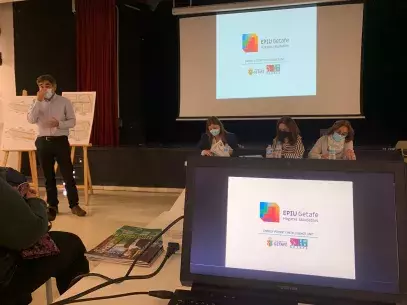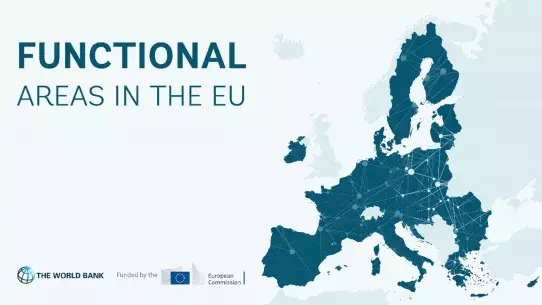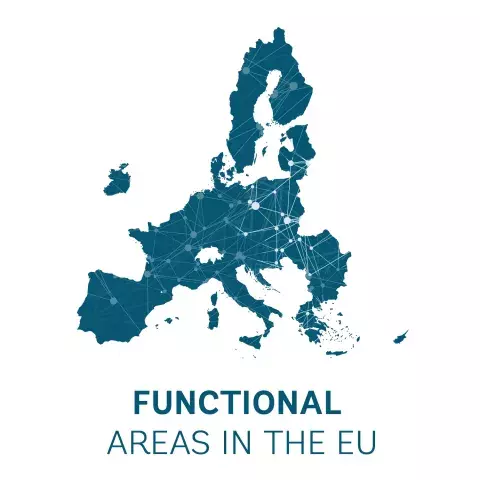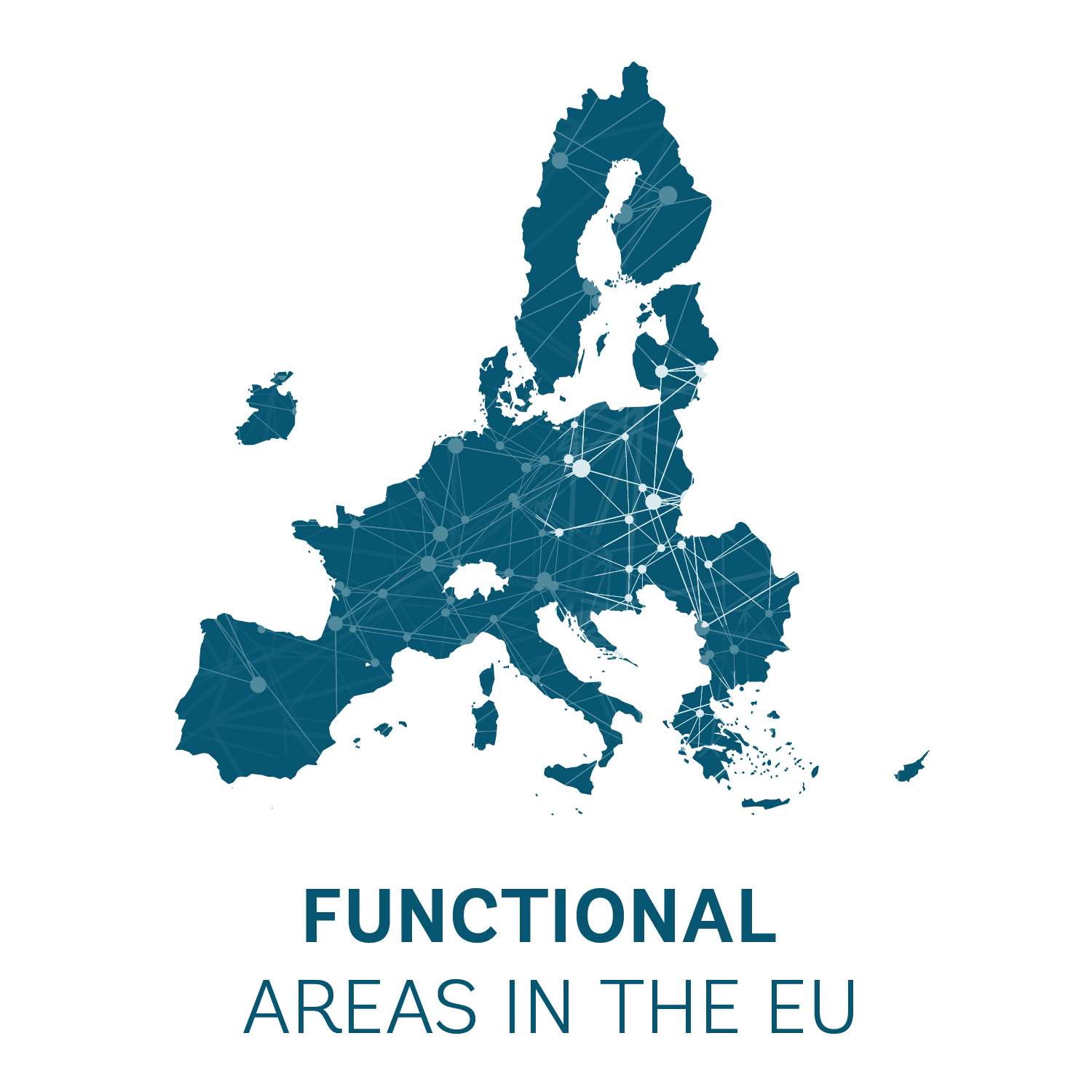
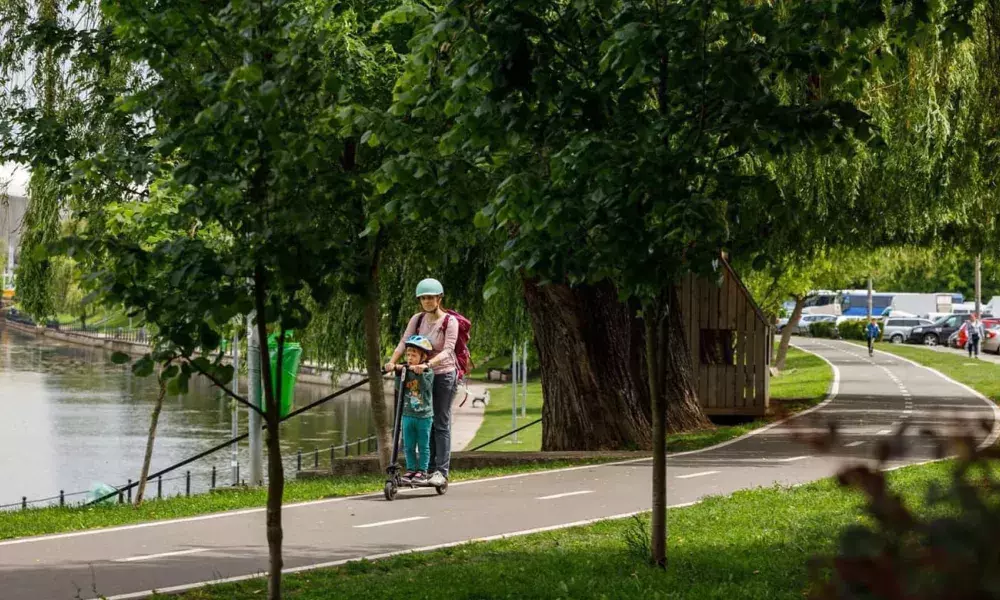
BLUE-GREEN INFRASTRUCTURE Challenge Most of the urban sprawl that took place around Cluj-Napoca in the last 20 years was channelled by the local topography along Someș River Valley. This resulted in over 70,000 people moving in Gilău, Florești and Apahida, together with other functions (industry and logistics, retail, sport and recreation, tourism etc.). These suburbs have no pedestrian and bicycle connection with the City. Someș River banks are underexploited for recreational activities and sometimes even used for illegal waste dumping. SolutionMore NGOs from Cluj-Napoca and its metropolitan area have been very active in promoting a reintegration of Someș River in the urban tissue. In this respect, a private, independent project called Someș Delivery was initiated in 2015 with the main purpose of rethinking the role of the river based on the innovative ideas of the local community. Every year, a certain segment of the river is analyzed from a multidisciplinary perspective, is subject to potential and need assessment, sanitation works, temporary renewal interventions to be tested with the community selected by contest, promotion etc. Of the outcome of these NGO activities was the idea of creating a metropolitan blue-green corridor. Following the Someș Delivery Initiative, the Municipality of Cluj-Napoca launched an international design competition in 2017, called ”Rethinking Someș”, for improving the quality of public areas along a segment of the river that crosses the city. The winning project involves the revitalization and redevelopment of the banks of the Someș River, to bring it back where it belongs, in the heart of the Cluj community. The investment aims to improve the quality of life of citizens in the interaction with Someș by using the concept of shared space: increasing the quality of pedestrian space (16 km of pedestrian spaces), expanding the infrastructure of bike lanes by over 10 km, expanding green spaces (112,000 sqm, over 2000 trees planted). The project also pays more attention to the environment by introducing charging points for electric vehicles – 68 charging points for electric scooters and bicycles and 8 charging stations for electric cars, intelligent lightning and remote management, etc. The total value of the investment is €35 mil. and most of the funding comes from the 2014-2020 Regional Operational Programme. The constructions works are estimated to be finalize by the end of 2023. In 2022, the Municipality of Cluj-Napoca adopted the Integrated Urban Development Strategy and the Sustainable Urban Mobility Plan for the current programming period, that covers the entire metropolitan area. The proposal of a blue-green corridor along Someș River, along with secondary similar interventions for its affluents, was selected as a priority for the 2021-2027 interval. The main idea of this project is to connect the segments of the river that are already subject to renewal interventions with those existing in other parts of the city, but also in the surrounding communes. This will result in one of the longest bike lanes in Romania and in over 20 km of qualitative public spaces. Other best practices Tourism, culture and brandingHarnessing the Untapped Potential: The All-Season Tourism Masterplan for Jiu ValleyJiu Valley & Jiu ConurbationContinue reading Best Practices | Urban regenerationUrban-rural linkages: regeneration of public spaces in the Cluj Metropolitan AreaCluj-Napoca Metropolitan AreaContinue reading Governance | Strategic planningIntegrated Development Strategy of Brno Metropolitan AreaBrno Metropolitan AreaContinue reading 12Next
About this resource
In 2021, the European Commission launched a pilot project to improve functional area approaches in the EU and has partnered with the World Bank to implement this initiative. As part of the project, the project team collaborated with 12 functional areas from seven EU countries, providing them with tailored technical support and assistance: Zagreb Urban Agglomeration (Croatia), Brno Metropolitan Area (Czech Republic), West Athens (Greece), Lake Balaton Area (Hungary), Kalisz-Ostrów Agglomeration, Kraków Metropolitan Area (Poland), Jiu Valley and Jiu Conurbation Functional Area, Caraș-Timiș Functional Area, Cluj Metropolitan Area, Oradea Metropolitan Area, West Ialomița Functional Area (Romania), and Trenčín Functional Area (Slovakia).
Similar content
